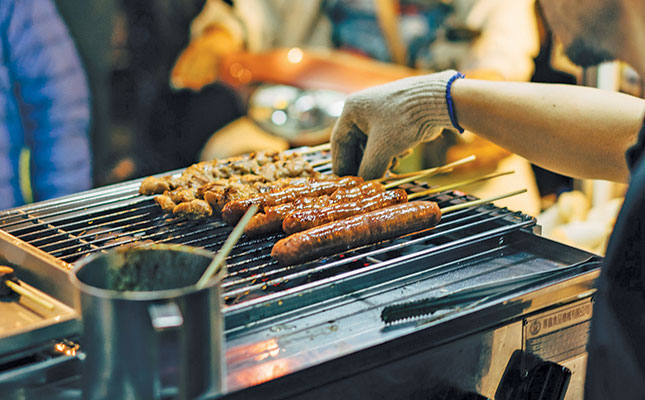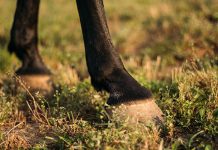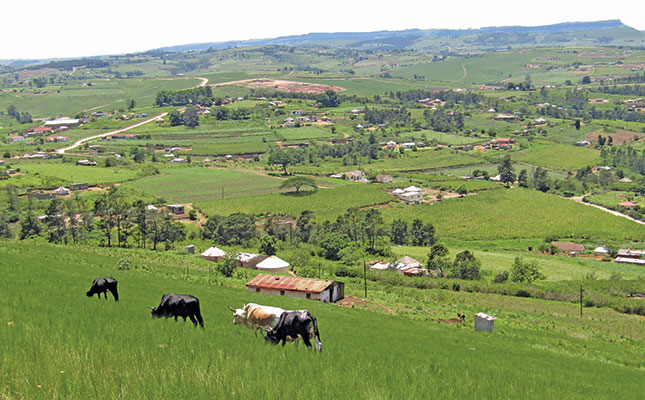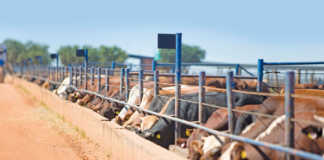
Photo: Markus Winckler
South Africa’s current beef product offering to the Chinese market is about as awkward as a cow on rollerblades. This is the opinion of Dr Dong Wang, director of China Marketing Solutions, who spoke at the LRF Aldam Stockman School in the Free State in October.
Wang, who was born in China but now lives in Australia, has been actively involved in meat importation into China since that country allowed such imports.
His message to South Africa’s beef industry is that if it wants to attract the attention of consumers in China, it has to streamline and improve its export strategy. And the first step to this is to understand the target market.
The Chinese meat market
According to Wang, meat consumption in China is skyrocketing, and this includes beef, although it comprises a relatively small share of the market.
“China’s meat consumption is dominated by pork,” says Wang. “Poultry, beef and lamb account for less than 10% each.”
For decades after the Chinese Communist Revolution of 1949, inhabitants of the country were forbidden to slaughter cattle for beef consumption as there was a lack of labour, and cattle were useful for agricultural production, Wang explains.
“The beef available for consumption came from [draught] animals, so their muscles were tough.” Consequently, beef is usually tenderised, cut up, and consumed in a traditional stew.
In recent years, hotpots have also become popular. Also known as soup-food or steamboat, hotpot is a flavoursome broth traditionally served inside a large metal pot. The broth is brought to the boil and left simmering for the duration of the meal.
“A third popular beef cooking style is barbeque, which has spilled over from Western cuisine,” says Wang.
China’s own meat production
China’s beef production has not been able to keep up with growing demand to the same extent as pork and poultry have.
“In the last 20 years, China’s pork production has increased by 20 million tons,” says Wang. “Poultry production has increased by 10 million tons. The [increase in lamb production] was tiny and the beef increase was even smaller.”
This is due to a number of reasons. First, China does not have a good cow-to-calf ratio.
“Therefore, the country doesn’t have many young animals available for fattening.”
Second, Chinese farmers have better farming alternatives than beef cattle. “It takes a long time to raise cattle, and results aren’t really comparable with pork or poultry,” says Wang, referring to the animals’ feed-to-meat conversion ratio.
“With pork and poultry, feed goes in and meat comes out. These simple economics are driving the production increase in pork and poultry.”
Another reason that Chinese farmers are not drawn to cattle production is the fact that Chinese consumption of beef is highly seasonal.
“Consumption is concentrated in winter, and especially before the Chinese New Year, which occurs around February. Beef prices usually peak annually around February and drop off during the summer months. From July to August, they pick up again,” says Wang, adding that this trend has a commercial implication for anybody trying to export to China.
Frozen vs fresh meat
China is the world’s largest beef importer.In 2020, it imported 2,1 million tons of beef, 23% of its beef requirement.
“We’re running out of countries that can export to China. I think China will drive the global beef price in the foreseeable future,” says Wang.
Chinese beef imports are divided into two segments, frozen and fresh, with the two segments coming from “different sets of countries”. Most frozen beef (40%) is imported from Brazil, followed by Argentina (23%) and then Uruguay (11%).
Wang says the reason for this is simply that “the South Americans have cheaper beef available”.
Lygia Pimentel, CEO of Brazilian consulting firm Agrifatto, agrees that Brazil’s beef exports largely rely on this unique selling point.
“On average, Brazil’s meat is 14% cheaper than the global average price of exported meat,” says Pimental, adding that the country exports 26% of its meat to 109 countries and is the biggest exporter of the commodity.
Besides being cheap, Brazil also has an excellent disease-prevention record.
“We haven’t had an outbreak of foot-and-mouth disease [FMD] since 2005. So, we have our diseases under control at the moment.”
Australia
Australia, another serious contender, has taken an entirely different approach to meat exports: it targets the high-quality end of the spectrum.
“Seventy per cent of China’s fresh beef imports come from Australia,” says Wang. “It’s mainly flown into the country.”
One of the reasons Australian beef is preferred by China’s high-income earners is that the country exports considerable quantities of Wagyu.
“They’re also able to produce a lot of grain-fed animals,” says Wang, adding that the Chinese enjoy beef from American and Canadian animals that have been rounded off in a feedlot for 230 days. “This produces highly marbled beef that’s sought after in the high-end food service sector.”
Jason Strong, managing director of Meat and Livestock Australia (MLA), says that Australia’s meat export strategy is an overarching, 10-year strategy focusing on producers, customers, livestock, environment, markets and systems.
“Our objective is to double the value of Australian red meat sales. To do this, our product must meet or exceed consumer needs and the focus must be on the area where we have a competitive advantage.”
Australia has identified this advantage as the quality and attributes of its product. These include animal health and welfare, and environmental credentials.
Funding is crucial to obtain the goals that the industry has set itself, and there is currently a levy of AU$5 (R57,09) per head of cattle. The levy is allocated differently, however, in the case of grass- and grain-fed animals.
For grass-fed animals, it is distributed as follows: AU$0,92 (R10,50) for research and development, AU$3,66 (R41,79) for marketing, AU$0,13 (R1,48) for Animal Health Australia and AU$0,29 (R3,31) for the National Residue Survey.
For grain-fed animals, it is AU$1,50 (R17,13) for research and development, AU$3,08 (R35,17) for marketing, AU$0,13 (R1,48) for Animal Health Australia and AU$0,29 (R3,31) for the National Residue Survey.
“We’ve recently [learnt] that Chinese consumers are placing a higher priority on [food] health [and] safety, quality and origins, all areas of Australian meat’s strengths,” says Strong.
Market research has shown Strong’s team that this is true for 75% of all Chinese consumers. MLA conducted a China COVID-19 impact survey that showed the following
to be the top 10 considerations when purchasing beef: safety; the fact that it helps boost the body’s immune system; quality; the country of origin; certified organic; easy to buy; freshness; balanced nutrition; no antibiotics; and no added hormones.
The problem with local beef exports
South Africa has been exporting beef to China since the Chinese government gave three abattoirs the green light to do so in February 2017. In 2018, a total of 6 800t were exported, says Wang.
“That’s about 300 containers, and about 1% of the total beef import into China.”
An FMD outbreak in South Africa resulted in a Chinese importation ban between March and July 2018. Although local farmers are bemoaning the loss of their FMD-free status, they should be concerned about more than just this, Wang cautions.
“The typical beef product offering from South Africa is quite awkward,” he says. “Typically, beef is rounded off for 120 days around the age of 18 months. This is a weird value, because the beef cannot go to the high end of the food retail segment. Chinese consumers expect at least 180 days of finishing.”
This meat, explains Wang, also cannot go to retailers, as South Africa’s low export volume cannot guarantee supply consistency.
“So, a higher export volume would be needed if South Africa’s beef is to be properly branded and marketed in China.”
Lower prices
Currently, most of South Africa’s beef exported to China is sold to the food service sector, says Wang.
“It can’t be sold to the high end, so it ends up in the lower end, typically in the south-western parts of China. And we need to remember that the lower end of the food service sector cannot pay much for beef.”
An example of the prices received for South African beef in China can be seen in the table above. According to Wang, all South African sales look similar to this.
He adds that South Africa needs to decide what its competitive advantage is.
“Is it quality, to produce high-end beef, or is it to dominate the high end of the food service sector? Or is it a cost advantage? My feeling is that South Africa falls into the middle, and that’s an awkward position. A clear strategy is required.
“I don’t think there’s a clear market segment that South Africa can penetrate so that a brand can be established, whether it’s the retailers or the high end of the food service sector.”
Besides defining a clear vision and aiming for a rise in export volumes, Wang says that exporters need to consider whether they want to export all parts of the carcass or not.
Email Dr Dong Wang on [email protected], or visit mla.com.au or agrifatto.com.br











